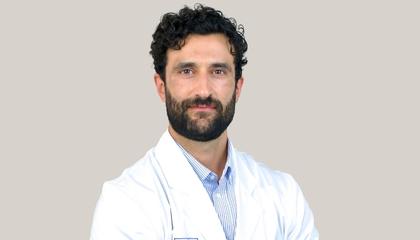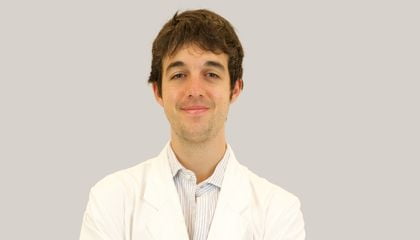A range of skin problems can be effectively treated by cryotherapy with our English-speaking dermatologists in Barcelona
Our dermatologists offer cryotherapy sessions to treat different types of skin lesions such as spots, warts, skin growths, and other benign lesions.
If you are interested in this cold treatment, make an appointment now for a dermatological consultation and cryotherapy treatment with one of our specialists in Barcelona.
What is cryotherapy?
In very general terms, cryotherapy is a treatment using cold.
It is a well-established method, used for decades, which consists of applying cold to a painful or pathological area of the body. It is particularly common in the fields of traumatology or the treatment of chronic pain (rheumatism, osteoarthritis, osteoporosis, joint inflammation, fibromyalgia, etc.).
In dermatology, its aim is to destroy skin lesions by burning them with cold. The principle is to suddenly freeze a skin lesion with liquid nitrogen, then to slowly reheat it. This thermal shock burns the lesion and causes its destruction.
More precisely, the nitrogen freezes the water in the cells which, via crystallisation, leads to the destruction of its membranes and structure.
Fast track your treatment
To book an appointment or speak with one of our friendly team, please get in touch using the options below.
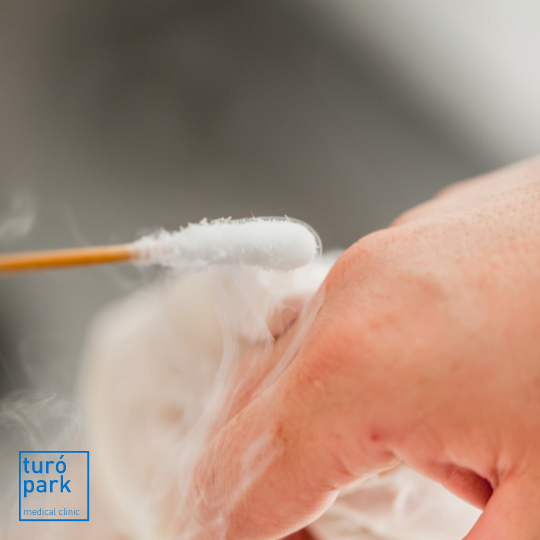
What are the indications for cryotherapy in dermatology?
In dermatology, cryotherapy is used to treat superficial and non-serious dermatological conditions such as:
- Warts
- Condylomata
- Superficial tumours of the epidermis
- Vascular tumours
- Moles (melanoma screening)
- Actinic keratosis (AK)
- Seborrheic keratoses
- Molluscum Contagiosum
We take care of your skin.
Our dermatologists welcome you for personalized care of all your skin, hair and nail problems.
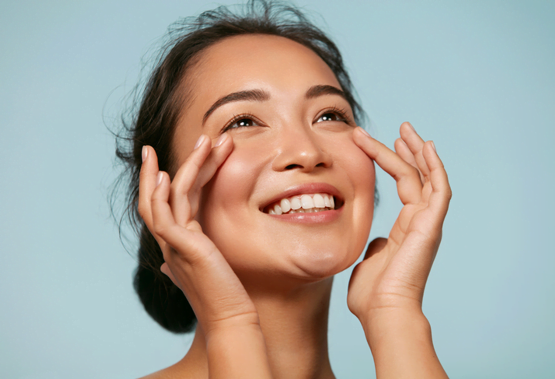
What happens during a cryotherapy session at Turó Park Clinics?

Step 1: Preliminary assessment
Before a cryotherapy session, our specialist will examine you to determine your specific needs and the origin of your lesions.
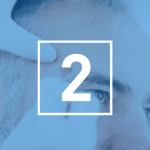
Step 2: Preparation of the lesion
They will then remove any make-up from the skin if necessary, or remove the lesion with a sterile scalpel blade if it is very thick (e.g. warts).
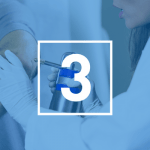
Step 3: Application of liquid nitrogen
The liquid nitrogen can then be applied to the lesion with a cotton swab or a spray bottle. The application takes about 10 seconds.
Finally, but importantly, the treatment does not require a local anaesthetic. A slight pain may be felt during application, followed by a burning sensation as the lesion warms up. The application of an anaesthetic cream one hour before may be suggested in cases where the pain is not well tolerated, or in young children.
What are the possible side effects of cryotherapy?
Complications related to dermatological cryotherapy treatment are rare. However, some side effects may occur after your session, including:
- Pain or a burning sensation, especially when thawing (varies from person to person)
- Redness
- Swelling of the skin
- Blistering
- Scabbing
- Pale or darker pigmentation of the skin after healing (usually temporary)
- Temporary decrease in sensitivity (varies from 6 to 12 months)
- Nail deformity when treating lesions at the base of the nail
- Superinfection, especially when the treated lesions are numerous and/or located in areas that encourage rubbing and itching
Do not hesitate to contact your doctor if you suffer from fever, intense pain or if you notice a discharge of pus or a foul odour from the wound.
Cryotherapy: how many sessions are needed?
One session is usually sufficient for superficial lesions. However, thick or deep lesions, such as plantar warts, require several sessions spaced 3 weeks apart. Your dermatologist will provide you with a personalised treatment plan during your initial consultation.
Our English-speaking dermatologists
